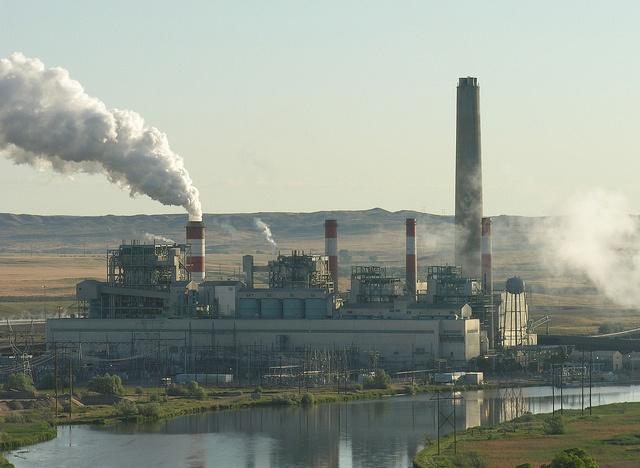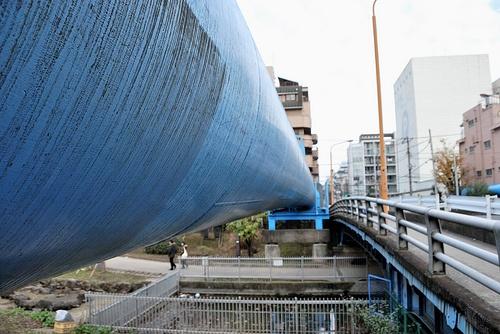'War on Coal' is Not the Real Reason Your Utility Rates Will Go Up


With new EPA regulations for coal-fired power plants looming ahead, the coal and utilities industries have issued sharp warnings about the impact of another "war on coal." The argument goes that the cost of installing pollution-scrubbing equipment, and/or shutting down outdated coal-fired power plants, is passed directly along to the consumer in the form of higher rates. The U.S. economy also feels the impact, so the argument goes, in terms of higher business costs, lost employment opportunities and a competitive advantage for coal-using companies overseas.
However, given the past record of accuracy for those warnings, it looks like a bad case of déjà vu all over again. According to a history of similar warnings about coal regulation compiled by the Center for American Progress (CAP), those predictions fail to account for the positive impact of innovation, as well as the economic counterbalance of improved public health.
Meanwhile, within the broader issue of U.S. infrastructure, CAP draws out an important point: In the coming years, the main driver of utility rates will not be the power plants or the fuel they use, it will be the urgent need to overhaul the nation's aging, badly outdated electricity distribution and transmission grid.
A history of the 'war on coal'
The CAP article, by Daniel J. Weiss Miranda Peterson, is well worth a read in full (here's that link again), but for those of you on-the-go, here is brief summary of the failed predictions they uncover through more than 40 years of the EPA's war on coal:
- 1970s: The war on coal set predicted that 1970 Clean Air Act regulations would spark "huge" utility rate hikes. By 1982, the Congressional Budget Office concluded that the impact was low.
- 1972: Similarly, a West Virginia environmental official testified that the Clean Air Act would result in costly compliance errors over a 25-year period, a prediction also later debunked by the Budget Office.
- 1977: Utilities and related industries predicted an "economic disaster" from new pollution scrubber regulations. By 1981, the National Commission on Air Quality determined that was wrong, and the bipartisan group had the figures to prove it. The estimated cost of installing new equipment was $16.6 billion in 1978, while the economic benefits of improved air quality ranged from $4.6 billion to $51.2 billion per year.
- 1989: In response to the acid rain bill, the lobbying group Edison Electric Institute (EEI) issued a detailed report predicting a dramatic rise in electricity rates over a 20-year period. CAP's own analysis of actual utility rates in 2009 -- 20 years later -- showed that the prediction was "flat-out wrong."
Innovation and the war on coal
Weiss and Peterson argue that the "war on coal" complaints go off-track because they fail to account for the ingenuity of the U.S. research and engineering sector:
The EEI study proved false because it ignored the innovation and savings that occur once managers and engineers have binding reduction targets with firm deadlines. In other words, EEI’s study could not predict nor account for future innovation. In reality, numerous studies found that regulation can stimulate creative invention. The EPA found that the Clean Air Act19 prompted the deployment of new technologies to reduce sulfur dioxide and nitrogen oxide emissions, which are ingredients in acid rain and smog.
That's not even counting more recent innovations, namely the emergence of utility-scale wind power and low-cost solar power, and the rise of the distributed electricity generation model -- along with the development of new energy storage technology.
As for the competitive advantage, as public awareness grows around the issue of global warming and other forms of fossil fuel pollution, the business sector has become more attracted to clean energy as an effective branding tool.
It's also worth noting the Chicago example, which illustrates that utility costs are only one factor in a strong local and regional economy, and the benefit of public health improvements may far outweigh the cost of paying a premium for clean, renewable energy over coal.
Image credit: Flickr/Yidjp_2b
AT&T, EDF Promote Conservation Toolkit In Water-Stressed U.S. Cities


"Conserving water conserves energy, and conserving energy conserves water," was a key message of 2014 World Water Day and the World Water Development Report. It's a message that business executives across the economy, not just those in the agricultural and industrial sectors, are increasingly taking to heart.
The search for ways to minimize waste and conserve water, other natural resources and energy is making for what may seem like strange bedfellows. Some of the world's largest corporations have been joining with leading environmental organizations to find what amount to triple bottom line solutions -- solutions that can turn business risks and threats into opportunities and benefits.
Working together at the water-energy nexus, AT&T and the Environmental Defense Fund (EDF) over the past few years have developed a set of tools to help businesses reduce water, and hence energy, use for cooling buildings. Setting a target of reducing their own annual water use by 5 percent (some 150 million gallons) and annual energy use by 400 million kilowatt-hours (enough for 35,000 U.S. households), the two unlikely partners are setting out to promote and foster adoption of their water-energy conservation toolkit in five water-stressed U.S. cities.
Business risks and threats at the water-energy nexus
It turns out that AT&T has very good reasons for being concerned about water and energy use. As EDF Project Manager Brendan FitzSimons notes in a blog post, “A quarter of AT&T’s top water-consuming facilities – a mix of offices and data centers – are in water-stressed regions, which poses a risk to its operations.” AT&T is not alone.
“Thirty-six states faced water shortages last summer, and the 2012 drought cost the U.S. an estimated $35 billion from crop losses and business interruptions,” FitzSimons points out. “U.S. water prices have doubled or even tripled over the past dozen years, and rates are expected to continue to climb.
Commercial and institutional (17 percent of publicly-supplied water use) and industry (5 percent), as well as U.S. households, are critically dependent on ample, affordable supplies of freshwater.
A similar situation exists when it comes to energy usage. The U.S. Energy Information Administration (EIA) estimates commercial and residential buildings accounted for nearly 40 percent of energy consumption across the country in 2012.
Compounding this, energy consumption among data center operators, such as AT&T, is growing a lot faster than average. Worldwide, data centers consume some 30 billion watts of electrical power -- equivalent to the output of 30 nuclear power plants, according to the results of a year-long investigation undertaken and published by The New York Times in 2012.
Moreover, the Times found, as much as 90 percent of that electrical power can be wasted, while reliance on diesel fuel for backup generators makes data centers some of the biggest sources of air pollution.
Then there's the linkage between water and energy use, a linkage that flows both ways. Here in the U.S., thermoelectric power generation is the largest user of freshwater supplies (41.5 percent), according to the U.S. Environmental Protection Agency (EPA). At 37 percent, irrigation is the second largest.
A water-energy conservation solution
All this makes the water-energy conservation partnership between AT&T and EDF important. The partners estimate that 28 billion gallons of water – enough to fill 400 million bathtubs year after year – could be saved by improving the efficiency of cooling towers in U.S. buildings.
As EDF's FitzSimons writes:
“Saving water creates a virtuous cycle: the more water we save means less energy is needed for supplying, treating and distributing water, and those energy savings translate into less water we need to use for developing and producing energy—the 'energy-water nexus.' Using water for cooling translates into lower costs for businesses as well — lower water/sewage charges and less energy and chemicals used for running building cooling systems — savings that add up.”
AT&T and EDF are promoting their water-energy efficiency toolkit to businesses in Dallas, Denver, Houston, Los Angeles and Phoenix – all water-stressed metropolitan areas. Evidence that water and energy aren't only on the minds of EDF and AT&T, other companies, including AT&T competitor Verizon, are taking the toolkit in-house and adapting it to meet their organizational needs.
Image courtesy of Y. Kanazawa/Flickr
Graphics courtesy of EPA WaterSense Partnership Program
First Interstate Water Credits Program Launched in the Ohio River Basin


The Electric Power Research Institute (EPRI) on March 11 officially launched the first water quality pilot trades in the Ohio River Basin. The pilot, which is the world’s only interstate water quality trading program, is part of a new initiative to test water quality improvement strategies. Duke Energy, American Electric Power and Hoosier Energy were the first buyers of the interstate water credits.
Water quality trading is a market-based approach that could enable facilities to meet permit limits using nutrient reduction credits from farmers who implement conservation practices, EPRI says.
Several parties, including industrial sources, farmers and the general public, contribute to nutrient loading -- which may lead to serious ecological problems. The transactions will produce cleaner watersheds, advance sustainability practices and test more cost-effective regulatory compliance options, according to EPRI.
The companies altogether purchased 9,000 stewardship credits, agreeing to retire the associated nutrient and ecosystem benefits, rather than apply them towards possible future permit requirements. The buyers can use the credits to meet corporate sustainability goals, and the credits may also be considered for future flexible permit compliance schedules by the participating states.
“These early credit transactions will immediately improve watershed and farm health, and will serve as a foundation for ongoing discussions on the potential for water quality trading to meet regulatory compliance obligations in the future,” said Jessica Fox, an EPRI technical executive and director of the water quality trading program.
Due to the fact that the affected watersheds cross state lines, working on an interstate basis is essential, according to EPRI. In August 2012, Indiana, Ky. and Ohio signed the first interstate trading plan where the states can operate under the same rules so that a water quality credit generated in one state can be applied in another. This framework set the stage for the pilot trades. At full-scale, the project could include up to eight states in the Ohio River Basin and potentially create credit markets for 46 power plants, thousands of wastewater facilities and other industries, and around 230,000 farmers.
Stewardship credit trades will continue through 2014 and 2015 to test critical programmatic features such as an online credit registry and live trading auction.
Water scarcity increasingly is becoming difficult to ignore, especially in California, which is facing one of the worst droughts in its history. Recognizing how climate change-related natural disasters such as droughts is crippling communities, President Barack Obama last month announced plans to pitch to Congress a $1 billion climate change resilience fund intended to help communities facing climate change-induced negative weather.
The global population will need 40 percent more water by 2030, according to a recent report by the U.N.’s World Water Assessment Program (U.N.-Water). The report highlights the threat to water supplies posed by the conflicting interests of a growing global population for energy and food, as well as water itself. The list is extensive and includes regulations and governance that lead to perverse outcomes, as well as threats from water contamination, pollution, climate change and the often profligate ways in which we use and manage freshwater resources.
Image Credit: Flickr dailyinvention
Based in San Francisco, Mike Hower is a writer, thinker and strategic communicator that revels in driving the conversation at the intersection of sustainability, social entrepreneurship, tech, politics and law. He has cultivated diverse experience working for the United States Congress in Washington, D.C., helping Silicon Valley startups with strategic communications and teaching in South America. Connect with him on LinkedIn or follow him on Twitter (@mikehower)
New Study Reveals the Workings of China's Pilot Emissions Cap-and-Trade Systems


Environmental and ecosystems degradation – air pollution in particular, most recently – has become a hot-button issue for the Chinese government and society. With increasingly polluted lakes, rivers and coastal waters, desertification and land degradation, and toxic air, perhaps nowhere in the world are the profund and far-reaching costs of an unconstrained, unregulated quest for rapid economic growth better illustrated.
Responding to rising public alarm and protest, China's government earlier this month pledged to tackle its pollution an environmental problems. Declaring a “war on pollution” in his first speech in office to open this year's session of the National People's Congress, Chinese Premier Li Kequiang stated, “Smog is affecting larger parts of China and environmental pollution has become a major problem, which is nature’s red-light warning against the model of inefficient and blind development.”
Pioneered by the European Union (EU), the Chinese government is turning to emissions cap-and-trade systems as a foundational element in its war on pollution. With pilot markets now up and running in seven major Chinese cities and provinces, Beijing-based consulting firm Environomist and contributing organizations recently released the first comprehensive study of China's nascent emissions cap-and-trade systems.
Ongoing urbanization in China
Urbanization in China has been taking place at an unprecedented rate, fueled by government policies and business investment. Six Chinese cities had populations of more than 10 million and 10 had populations between 5 million and 10 million. The number of urban residents exceeded that of rural areas for the first time in 2011, Bloomberg Businessweek highlights in a recent report.
Along with announcing a “war on pollution,” Chinese Premier Li Keqiang in his first speech in office also established urbanization as a national priority -- an announcement that assures China's cities will continue to expand, both in terms of population and their collective impact on China's ecosystems, environment and natural resources.
According to the government's “National New-type Urbanization Plan (2014-2020)," 60 percent of Chinese will be living in cities by 2020, up from 53.7 percent today.
China's "war on pollution"
China's State Council in June 2013 unveiled a package of 10 anti-pollution measures intended to reduce carbon and greenhouse gas emissions. At the top of the list is a pledge to cut pollution “from six smog-producing industries at least 30 percent per unit of output by 2017,” China's state-controlled Xinhua news agency reported.
New regulations seek to reduce polluting emissions across economic sectors that account for over 70 percent of national emissions, including the thermal electric power, iron and steel, petrochemicals, cement, non-ferrous metals, and chemicals sectors. The aim is to bring them into compliance with international standards established in 47 Chinese cities.
Looking to put more bite into these initiatives, the Chinese government is placing greater emphasis and more resources on requiring more in the way of measuring and monitoring emissions, business disclosure and enforcement. Focused and dependent on spurring economic development and growth, enforcement at the provincial and local levels, in particular, "has long been lax and superficial in China,” Xinhua has pointed out.
Emissions trading: Seven pilot systems
The Chinese government is also betting on emissions cap-and-trade systems as an effective means of curbing pollution and improving environmental health and integrity, particularly in China's burgeoning cities. Pilot emissions cap-and-trade systems are now operating in seven major cities and provinces: Beijing, Chonqing, Guandong, Hubei, Shanghai, Shenzen and Tianjin.
Scientists have long counseled policymakers to take steps to drastically reduce carbon and greenhouse gas emissions, deeming such measures the most effective means of improving air quality. Additionally, scientists argue, such measures maintain the health and integrity of environmental processes and ecosystems upon which society ultimately depends, as well as mitigate the costs and threats posed by climate change.
Employing market-based mechanisms such as emissions cap-and-trade markets as a means of incorporating market externalities and factoring unaccounted-for environmental and social impacts into market prices has become fashionable among the international development community and economists.
Though reviews and analysis of the performance and results of the EU's Emissions Trading System (ETS), the first such initiative in the world, have been decidedly mixed, the ETS, and other such market-based mechanisms launched around the world since, are viewed as an initial step in an evolutionary process -- one that can be effective.
Drawing on contributions from Centre Testing International Corp., China Carbon Forum, the Shanghai Environmental and Energy Exchange, South Pole Carbon Asset Management and the United Nations Development Programme (UNDP), the Environomist's, “China Carbon Market Research Report 2014,” offers detailed insight and analyis of the workings of China's nascent emissions cap-and-trade system, as well as a comparison with the EU's ETS.
The comprehensive and groundbreaking report should prove a valuable information resource to policymakers, businesspeople, scientists and NGOs, as well as anyone concerned about and interested in efforts to curb ongoing increases in carbon and greenhouse gas emissions -- whether in China or elsewhere in the world.
Image credit: Flickr/NASA Goddard Space Flight Center
House Vote on National Parks Could Make or Break Local 'Gateway' Communities


The House of Representatives will vote this week on a bill that would require public participation before a president designates a national park. The proposed bill, H.R. 1459, strips presidents of the power given to them under the American Antiques Act of 1906 to designate a national park.
Specifically, the bill seeks to classify national park declarations under the Antiquities Act as a major federal action and would would require the National Environmental Policy Act (NEPA) to be applied. To meet NEPA requirements, federal agencies must prepare a detailed statement called an environmental impact statement (EIS).
The bill would also limit national park declarations to one per state during a president’s four-year term in office, unless otherwise approved by Congress.
The bill is sponsored by Rep. Rob Bishop (R-UT) who criticized President Barack Obama’s use of the Antiquities Act earlier this month to expand the Coastal California National Monument to include the Point Arena-Stornetta Public Lands. Bishop characterized Obama’s use of the Antiquities Act as “disappointing to say the least.” He added that it “is also purely political and undermines sincere efforts to reach consensus on questions of conservation.” Bishop described H.R. 1459 as being “about transparency and fairness.”
Bishop claimed that Obama going around the Congress to include the Point Arena-Stornetta Public Lands in the Coastal California monument “only hurts our country as we move forward tackling some of the biggest issues facing the American people.” A recent report about the economic value of the National Park Service shows otherwise. In 2012, national parks brought $1.5 billion in economic benefits. National parks had more than 282 million visitors in 2012, an increase of 3.9 million over 2011, and those visitors spent $14.7 million in local gateway communities. The money spent by the visitors to national parks contributed 243,000 jobs and $9.3 billion in labor income, according to the report.
A look at some specific instances of how national parks brought money and jobs to gateway communities shows just how valuable they are to the overall economy. Take the three Flagstaff, Ariz. area national parks (Sunset Crater Volcano, Walnut Canyon and Wupatki). There were 489,906 visitors to the three parks who spent $26,362,000 in gateway communities which supported 337 jobs in those communities. Or take the Fire Island National Seashore in the state of New York which had 483,334 visitors in 2012. Those visitors spent more than $19 million in gateway communities which supported 206 jobs.
The 16-day government shutdown in October drastically affected NPS visitation and spending in gateway communities, according to another report. All 401 national parks were closed during the shutdown. That resulted in a 7.88 million decrease, a 33.3 percent decline, in overall October visitation -- which caused in a loss of $414 million to gateway communities. A handful of national parks were able to open with state funding before the shutdown ended. For every dollar of funding for those 14 national parks opened with state funding, about $10 was generated in visitor spending.
“National parks are the best idea we ever had,” declared Wallace Stegner, the writer and environmentalist, in 1983. They certainly are a good idea for gateway communities who benefit from the tourism and jobs created.
Image credit: Chris M. Morris
Sustainability reporting moves up British business agenda


While 70% of British businesses identify sustainability as a key driver for growth, only 51% believe that sustainability issues will impact their firm’s financial performance over the next two years, finds a new report.
However, businesses that have made the connection between sustainability and business performance are willing to invest in internal teams to manage and deliver sustainability with81% of the respondents saying that they have more than five staff members dedicated to sustainability at a programme management level.
The report by sustainability analysts Verdantix was commissioned by the BSI, the business standards company, to discover how the challenge of sustainable development is really being addressed by businesses.
David Fatscher, head of market development for sustainability at BSI commented: “Although the results show broad acceptance amongst organizations that sustainability is a relevant issue, British industry still has plenty more to do before sustainability becomes business as usual. But we are encouraged that reporting performance on sustainability metrics such as energy, carbon and social responsibility, is moving up the agenda.”
Indeed, sustainability performance reporting is now common practice for large UK firms and 100% of those surveyed plan to publish a sustainability report in 2014, with 91% integrating financial and sustainability data into their annual report. The most commonly reported sustainability data will be carbon emissions (99%), energy (98%), and social responsibility (93%). A large majority will report on waste (77%), water (77%) and other greenhouse emissions (77%).
Picture credit: © Andrey Burmakin | Dreamstime.com
Why 500 Everyday Americans Are Test-Driving Life Without Clean Water


It’s World Water Day, a time to celebrate global efforts to bring clean water to the 800 million people who still don’t have it. But if all of this talk about the water crisis seems distant or vague, here’s a statistic that should hit closer to home: This year, a majority of the world’s population will live within 31 miles of an endangered water source.
Americans are notoriously oblivious to water issues. A recent study in the journal Proceedings of the National Academy of Sciences found that the average American uses more than double the water he or she estimates, and that most of us are unsure of which practices or appliances consume the most. Americans use more than 450 liters (118 gallons) of water at home every day, more than any other group.
Our cluelessness – coupled with growing scarcity and the specter of climate change – raises an interesting question: How do we change the way we use water before places like Southern California start looking more like South Sudan?
The answer from Los Angeles-based nonprofit DIGDEEP Water: Start by changing the way Americans think about water, then change the way they use it.
Last year, DIGDEEP challenged Americans to reduce their water consumption from 450 liters a day to just four, using the equivalent of four soda bottles to cook, clean, drink and bathe for several days. They hoped a brief run-in with water poverty would change the way participants understand their water while raising funds for water projects around the world. They called their experiment the 4Liter Challenge.
https://www.youtube.com/watch?v=AU1q5X3juU0
“Living on just four liters of water isn’t easy, but many of the participants had a great time with it,” said George McGraw, executive director of DIGDEEP. “People shared really intimate moments: difficulties shaving their legs or washing their hair, inventive ways of cooking a meal or washing the dishes, really moving personal reflections. It’s amazing how the experience sticks with you, even after it’s over.”
The 2013 Challenge, which took place last October, brought together 592 people from six countries and created a social media firestorm. Participants included students, families, working urbanites, and teams from universities, nonprofits and companies. People shared hundreds of photos, videos and tweets from their challenges.
In one of my favorite posts (right), participant Kirsty Spraggon licked her breakfast bowl clean instead of washing it in the sink, sparing a precious few milliliters.
By the end of the weeklong campaign, participants had raised more than $17,000, funding six water projects in South Sudan, Cameroon and the United States (New Mexico). Their experiments with water poverty directly benefitted communities trying to escape that same fate.
This morning, DIGDEEP released an interactive infographic of the best posts from last year’s challenge. The site features “moments” organized by category (like cooking, bathing, cleaning) from real participants, including celebrities like David Henrie, Drake Bell and James Scott. They also built a nifty tool that allows donors to “track” how and where their gifts are being used. The tool was designed by VeryNice.co, an LA-based creative agency and pioneers or the “give-half” model I wrote about here.
While per capita water use in the U.S. has declined in recent years, we’re not out of the woods just yet. Our decisions today – as communities and as individuals – will determine just how much water (and of what quality) we’ll enjoy in the future. Organizations like DIGDEEP believe the critical first step is to change the way we think about water. After exploring the 4Liter Challenge, I’m inclined to agree.
The 4Liter Challenge is an annual campaign by LA-based human rights non-profit DIGDEEP Water. The program includes a social media campaign and a 6-12 grade curriculum, both of which launch every October. You can learn more and join me in pre-registering for the 2014 Challenge by using the link here.
Co-authored by George McGraw.
Jasmine Youssefzadeh is a social entrepreneur committed to finding innovative mediums for non-profits and corporates to build alliances through new media. She is Founder and Director of Production of filmanthropos, a creative agency that specializes in multi-platform storytelling for philanthropies, causes, and corporate social responsibility initiatives.
George McGraw wants to change the way you think about water. George runs the DIGDEEP Right to Water Project in Los Angeles, which he founded. He holds a B.A. from Loyola University Chicago and a professional degree in International Law from the United Nations University for Peace (UPEACE) in San José, Costa Rica. He has worked for several foreign governments and has consulted for the United Nations Development Programme in Afghanistan. His organization DIGDEEP brings sustainable, clean water to communities around the world, while helping Americans to use their own resources more intelligently. George speaks, writes articles and makes all kinds of media for outlets like law reviews, universities, TEDx, and the Huffington Post.
Featured image: Flickr/joeshlabotnik
3p Weekend: 8 New Electric Vehicles and Plug-Ins We Can't Wait to Drive


With a busy week behind you and the weekend within reach, there’s no shame in taking things a bit easy on Friday afternoon. With this in mind, every Friday TriplePundit will give you a fun, easy read on a topic you care about. So, take a break from those endless email threads, and spend five minutes catching up on the latest trends in sustainability and business.
Electric vehicles and plug-in hybrids are inching closer to the mainstream. U.S. plug-in electric and hybrid vehicle sales nearly doubled in 2013, and EV production worldwide is projected to increase by 67 percent this year. Almost all automakers have at least one electric vehicle in their portfolios, and some truly drool-worthy rides are set to hit the market in 2014. Everyone has their favorites, but here are eight new EVs and plug-ins that we can't wait to drive.
1. BMW i8
The highly anticipated BMW i8 plug-in hybrid electric car is entering production in April, with customer deliveries beginning in June. Its electric-only range is decent at 23 miles, but it gets 112 mg and can go from 0 to 62 mph in 4.4 seconds. It's set to hit the European market first and is reportedly already sold out, but we can dream, can't we?
2. Toyota i-Road
The ingenious Toyota i-Road program combines the convenience of a bike rental service, the comfort of an enclosed car and the compact footprint of a motorcycle in an electric three-wheeler. Commuters in Aichi, Japan are already testing the vehicles in self-service sharing stations, and Toyota recently announced it will deploy 70 additional vehicles for a three-year test in in the town of Grenoble, in the French Alps.
The i-Road automatically leans around corners, and Toyota says no specialized skill is required to operate it -- which leads to the second reason we're so excited about this clever little car: It holds vast potential as a form of "last-mile" transport. Potentially, i-Roads could serve as a form of transport that carries commuters from train stations and other public transport hubs to their office complexes -- freeing up dense urban grids and maybe even solving the "Google bus" problem.
3. Tesla Model X
The Tesla Model X crossover offers an all-electric alternative to standard three-row minivans and SUVs. With an 85 kWh battery option that equates to more than 250 miles in range, the Model X can go farther than any other vehicle on our list, and it has some pretty sweet falcon doors to boot.
With the Model X expected to ship by the end of this year and the mass-market Model E in the works, Tesla is showing no signs of slowing down. Its planned battery "Gigafactory" will support the manufacture of 500,000 electric cars per year and will also produce batteries for energy storage.
4. Volkswagen XL1
Volkswagen only plans to make 250 of these hand-built, plug-in-diesel vehicles as test units, but the XL1 made our list because of its sleek and smart engineering. The super aerodynamic plug-in gets its name from the fact that it uses less than one liter of fuel to go 100 kilometers (equivalent to 235 mpg). It's also up for World Green Car of the Year.
5. BMW i3
While not as sexy or sporty as its high-end cousin, the i8, the BMW i3 offers solid range at a reasonable price -- meaning it may fair well in the mass market. At around $40,000, the i3 can travel up to 100 miles on a single charge and can go from 0 to 60 mph in 7 seconds.
6. Kia Soul EV
Those who are sold on the boxy car trend are sure to love the forthcoming Kia Soul EV. Set to hit the market late this year, the Soul offers long range for a low price. It is expected to travel 120 miles on a single charge at a reported price of only $35,000. Count us in!
7. Volkswagen E-Golf
The standard Volkswagen Golf is one of the most popular small cars in the world, and the E-Golf looks strikingly similar -- except with respect to miles per gallon, of course. The E-Golf is expected to travel 90 miles on a single charge and is Volkswagen's first electric car to hit the mass market.
8. Cadillac ELR
We're more or less excited to drive this one to see how it compares with the Chevy Volt. A great deal of its internal specs are similar (a 1.4-liter gasoline engine and 16.5-kWh lithium-ion battery pack), but the ELR boasts a sleek and angular body that's characteristic of Cadillac. Naturally, it has a bit of extra torque, too. We're not sure it's worth it for the 35-mile range and $75,000 price tag, but it's nice to see General Motors expanding its EV offerings into the luxury market.
Speaking of EVs: Triple Pundit hosted a live panel discussion yesterday on the fate of sustainability in the auto market. If you missed the chat, featuring Mike Tinskey of Ford Motor Co., Deb Frodl of General Electric’s Ecomagination and Haukur (Hawk) Asgeirsson of DTE Energy Co., catch it here or on our YouTube channel.
i8 image courtesy of BMW Group
i-Road image courtesy of Toyota
Cadillac ELR image courtesy of Cadillac
Based in Philadelphia, Mary Mazzoni is an editor at TriplePundit. She is also a freelance journalist who frequently writes about sustainability, corporate social responsibility and clean tech. Her work has appeared on the Huffington Post, Sustainable Brands, Earth911 and The Daily Meal. You can follow her on Twitter @mary_mazzoni.
Employee Engagement: Thinking of Changing Vendors? Think Again


Submitted by Guest Contributor
By Matthew Nelson, NYLife
Don't get me wrong, if you are thinking of changing vendors for your employee engagement programs, go for it. But don't go into the process thinking it is going to be easy to flip the switch from one vendor to another.
Here are some lessons I learned to achieve flipping the switch successfully:
The RFP Process: Managing Expectations
When we started the Request for Proposal process, I underestimated the number of partners, the amount of time and the number of communications (managing expectations) needed for a smooth transition. Think about it. Any online system means that you will need to engage the following departments in your company:
- Project management (we are philanthropists and engagement folks, let the experts manage the process)
- Technology (you will get into the weeds like never before)
- Security (you are sending personnel data over the wires, do it safely)
- Audit (they will give you peace of mind, even if it is an arduous process)
- Human Resources (they have the data you need)
- Payroll (especially if you are doing payroll deductions)
- Controllers (they will make you jump through the hoops but it is worth it to know the systems you create internally and with your vendor are rock solid)
You will have lots of new friends from  across the company!
across the company!
Because you are the business owner, you will meet with all of the above departments so they understand your programs. They will want you in every meeting. The transition will be nearly a full-time job for you so make sure your usual job gets covered.
Ultimately, however, your job will be to manage expectations and communicate. Jill Johnson, president of Management Mastery, offers sage advice:
“The project management associated with the evaluation, selection and implementation of a new vendor solution has everything to do with managing expectations and providing frequent, clear and consistent communication. In my engagements, one must constantly re-visit and re-adjust expectations with a variety of stakeholders relative to a variety of topics – budget, schedule, requirements, deliverables, understanding, etc. There is little room for ambiguity in any and all communication – be specific.”
There will be setbacks, unanticipated consequences and glitches. Name that up front.
Expect Crises…
When I bought my first house, a friend and real estate lawyer told me to expect three major crises in the process. When the sewer line looked like it was filled with tree roots, I thought, “one down and two to go.” Normally I would have freaked out, but my expectations were managed well and I was soon the proud owner of my first home.
…And Lots of Communication
You will need to communicate up and out. Your leadership will want to know the progress. Have a small steering committee that can help you get the resources you need to be successful. You might want to have the heads of the departments listed above on the steering committee. Together, they will think of things no one business area would think about.
You will also need to keep your employee base informed. Send out teasers of some of the new upcoming features. If you set a launch date (and give yourself plenty of extra time), make sure you deliver on it. Deadlines are always helpful but they are also fraught with disappointment and the need to  apologize. Lead with your strengths and set a realistic launch date.
apologize. Lead with your strengths and set a realistic launch date.
Pick Up the Slack: Thanking the Troops
After your programs launch, have a recognition event for all those other departments who chipped in. We gave out awards to every person involved. They were all a little silly, but the one-liner awards reflected the role they played in the success of the transition. From the very top, the “Resources R Us” award went to our Chief Administrative Officer for getting all the right people to drive the planning and implementation.
And to all my colleagues who had to jump in and cover my usual work, they received the “Pick Up the Slack” award. The awards were a great way to acknowledge and thank everyone involved.
Making the transition from one vendor to another will give you a whole new skill set, a new set of internal friends, a greater appreciation of how your systems work and the satisfaction of knowing you are promoting philanthropy and engagement in new ways. Buckle up!
Join Matthew at the Charities@Work 13th Annual Best Practices Summit on Employee Engagement in Corporate Citizenship on April 3-4, 2014, one of the country’s leading conferences on employee engagement and corporate social responsibility with attendees from Fortune 500 companies across all sectors of business.
A World Water Day-Themed Google Chat w/ Michael Kobori, VP of Sustainability, Levi Strauss & Co.


Every Week, TriplePundit takes 30 minutes or so to chat with an interesting leader in the sustainable business movement. These chats are broadcast on our Google+ channel and embedded via YouTube right here on 3p.
On Friday, March 21st at Noon Pacific / 3:00pm EST, TriplePundit’s Founder and Publisher, Nick Aster, spoke with Michael Kobori, Vice President of Sustainability at Levi Strauss & Co.
This special chat coincided with the week of World Water Day, and the overarching theme focused on the role of resource conservation in sustainable fashion. Michael provided an overview of Levi Strauss & Co.’s lifecycle assessment strategy (including why the jean manufacturer is focusing on water), product innovations like Water<Less, the company’s involvement with Better Cotton, how LS&Co. is changing processes (including recycled water efforts in the finishing process), and the importance of changing consumer habits.
If you missed the conversation, you can watch it right here or on our YouTube channel.
About Michael Kobori
Michael is the Vice President of Sustainability at Levi Strauss & Co. Under his tenure, the company has been a pioneer, reducing the environmental impact of its products through its Levi’s® Waste<Less™ and Water<Less™ products, Dockers® WellThread Collection, Care for Our Planet program, and leadership on the Better Cotton Initiative. Based on its sustainability work, Levi Strauss & Co. was recently named 30th most innovative company in the world by FastCompany magazine. You can follow him on Twitter: @KoboriGrillsCSR